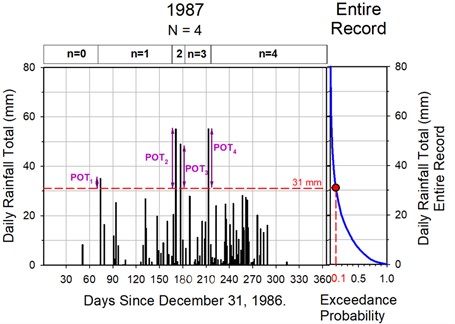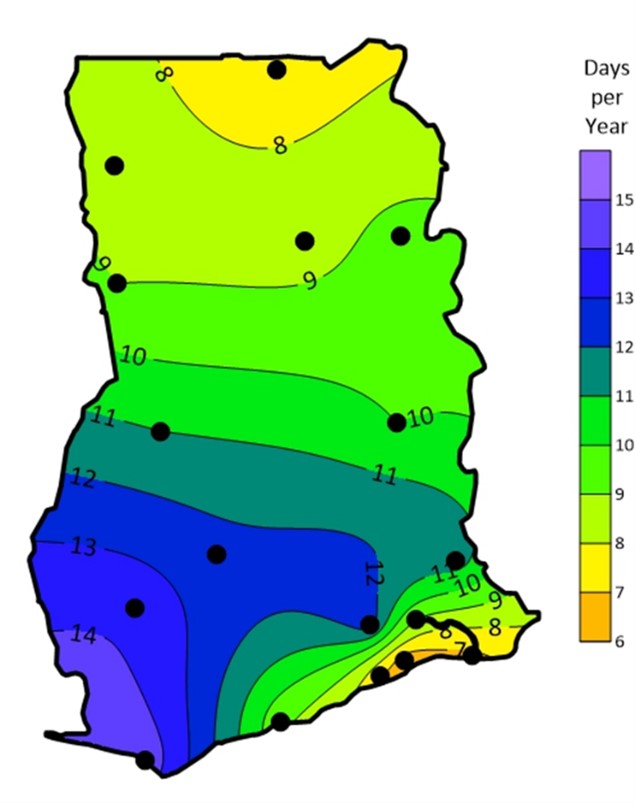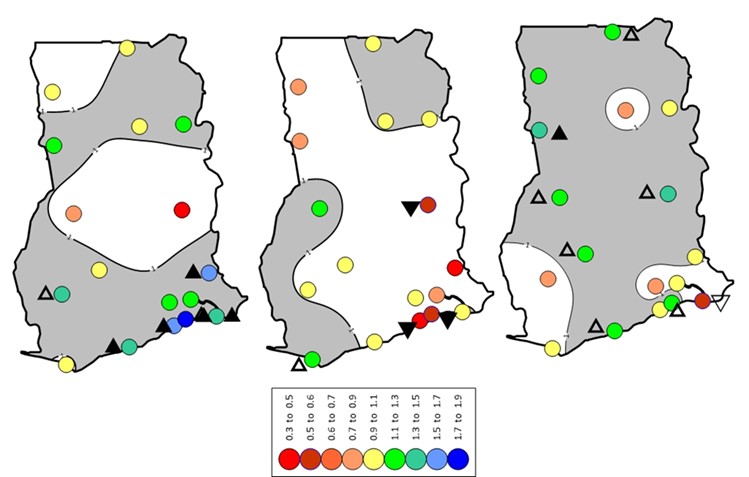Master's thesis and Extreme Daily Precipitation in Ghana
- Category: Maps, EVA & Data Viz
- Place: Dept. of Geography, UF
- Date: Spring 2021
- URL: https://geog.ufl.edu/2021/03/18/geography-colloquium-masters-student-posters/
Portfolio submission description
Focus on potentially increased frequency of extreme hydro-climatological events under climate change is intensified by Ghana’s reliance on rainfed agriculture, and the question whether precipitation climatology has returned to conditions prevailing before the regional drought of the 1970s and 80s. This study examines long-term (44 to 51 years), complete, daily rainfall records from nineteen stations nationally to determine magnitude and frequency of totals in excess of the historical 90th percentile at each station. Results are divided into three sub-populations corresponding to pre-drought, drought, and post-drought periods. Four research questions are addressed; (1) Is there evidence of significant inter-decadal scale variability in these variables, (2) Are there significant differences in characteristics between periods, (3) Are there any distinctive regional patterns in changes, and (4) Can findings be extended to various definitions of what constitutes extreme rainfalls? The Mann Whitney U test determines significant breaks that define the overarching temporal framework of the research. The hypergeometric distribution determines the statistical significance of changes in magnitude and frequency. Exponential, generalized Pareto and Poisson distributions are fit to the magnitude and frequency of post-drought data. Recovery is broadly defined as no difference between pre-drought and post-drought data. Some locations in mid-Ghana have recovered, while Unlike mid-Ghana, coastal areas have not recovered in frequency or magnitude, Outliers correspond to Axim in the southwest and Navrongo in the north.



